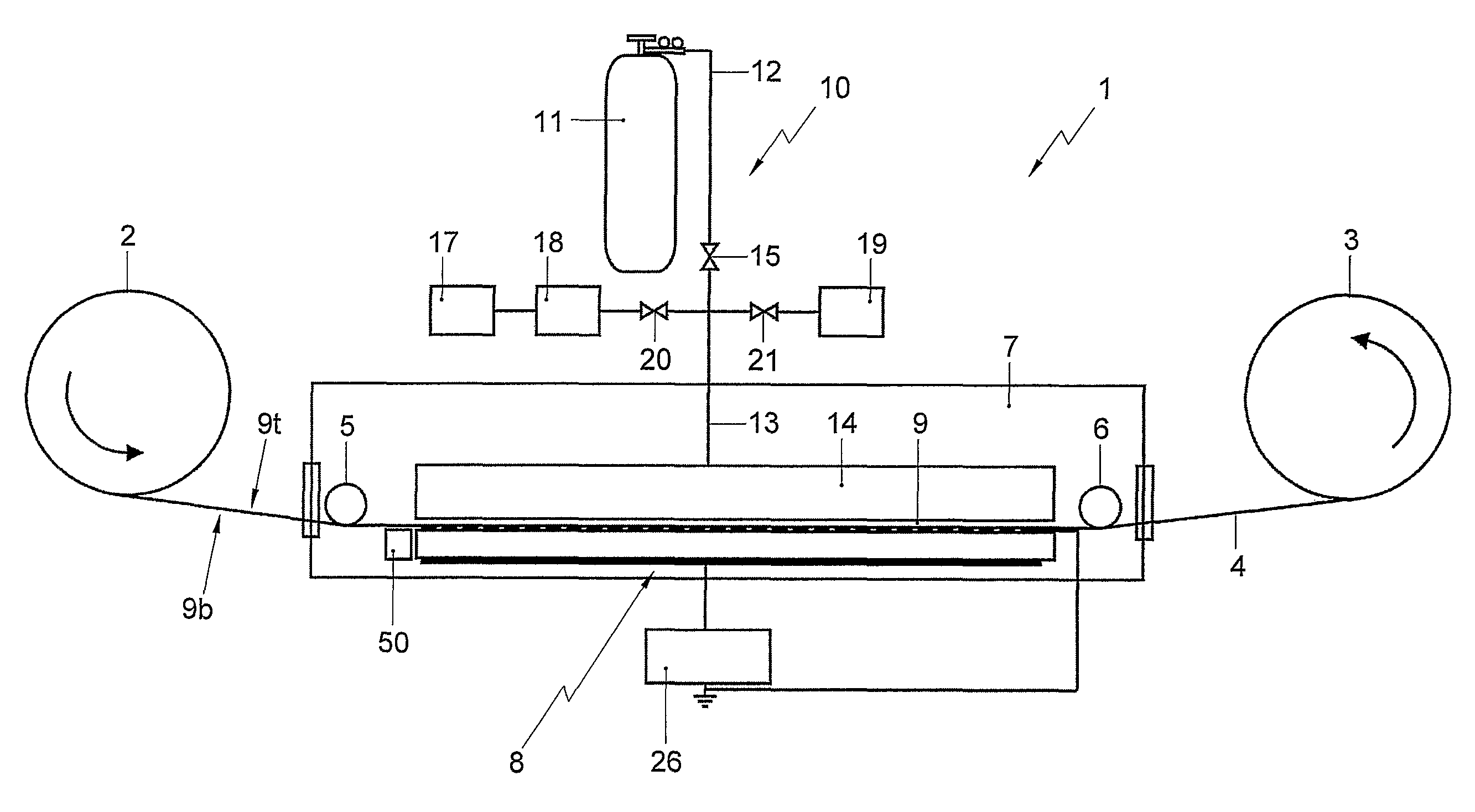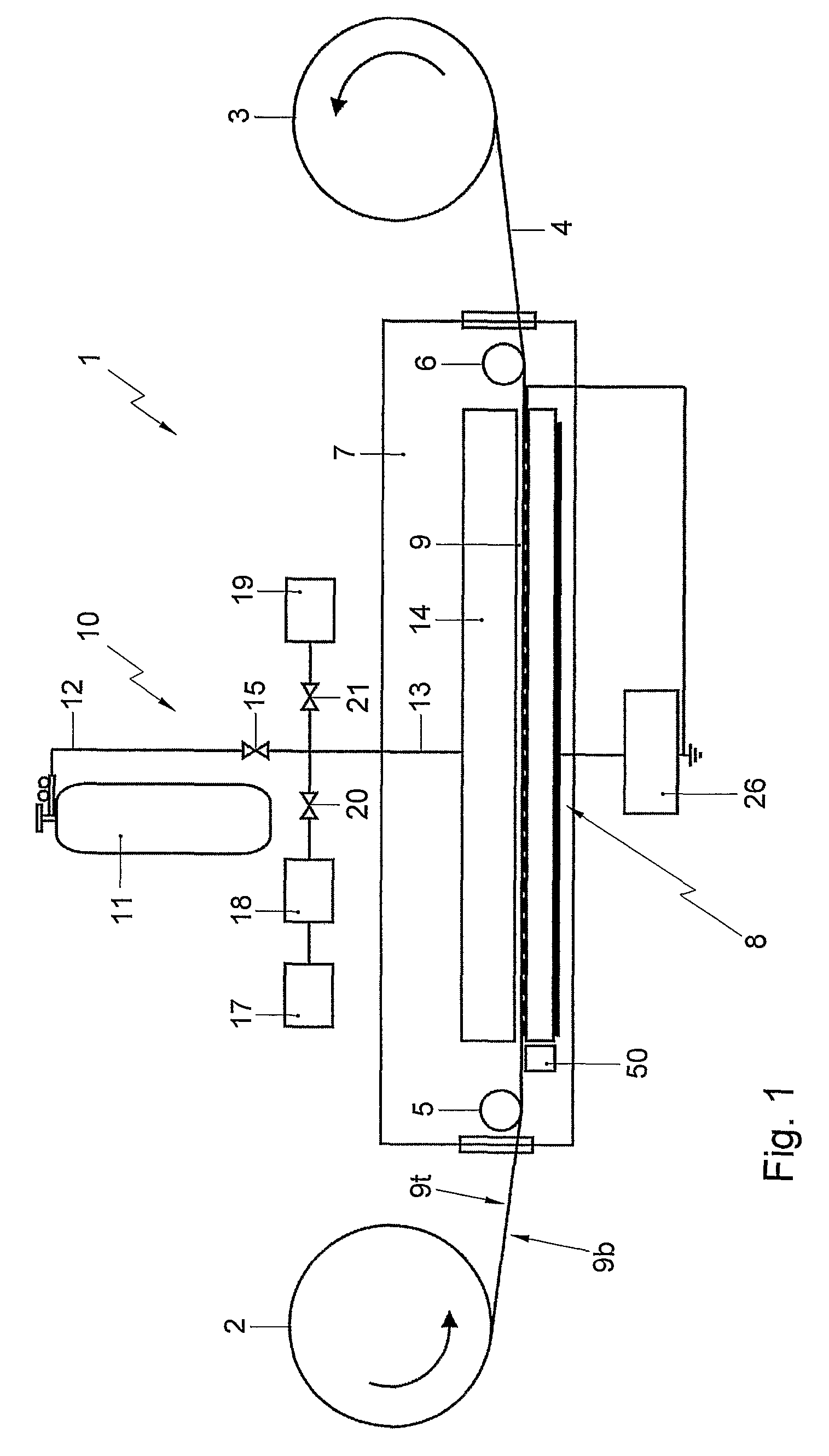Method for depositing a polymer layer containing nanomaterial on a substrate material and apparatus
a technology of nanomaterials and polymers, applied in the field of nanomaterials depositing polymer layers on substrate materials, can solve the problems of limited amount of nanoparticles that may be attached to fibers, complicated procedures and multi-step processing,
- Summary
- Abstract
- Description
- Claims
- Application Information
AI Technical Summary
Benefits of technology
Problems solved by technology
Method used
Image
Examples
first embodiment
[0065]FIG. 1 shows a schematic view of an apparatus 1 for depositing a polymer layer containing nanomaterial on a substrate material according to the invention. The apparatus 1 comprises a substrate carrier having a first and a second roller 2, 3 for winding the substrate material which in the shown embodiment is a textile layer 4 comprising fibers of woven and / or non-woven textile material. The textile layer 4 between the two rollers 2, 3 is guided by means of a first and a second guiding roller 5, 6 in an atmospheric pressure plasma chamber 7. The plasma is generated by means of an electrode structure 8 having a substantially flat boundary plane 23, which is arranged near a bottom surface 9b of the textile layer 4 to be treated. The plasma electrode structure 8 will be described in more detail with reference to FIGS. 2-5.
[0066]The apparatus 1 further comprises a transport structure 10 for providing a polymerization material near the top surface 9t and / or bottom surface 9b of the t...
second embodiment
[0072]In a second embodiment a carrier gas is delivered from the tank 11. Nanomaterial is mixed with a gaseous precursor in the vessel 19 and the mixture of the nanomaterial and precursor goes through the valve 21 and is mixed with the carrier gas in the feed line 13.
third embodiment
[0073]In a third embodiment a carrier gas from the tank 11 and a gasified liquid precursor from the vessel 17 are delivered into the feed line via the valves 15 and 20, respectively. Nanomaterial is injected directly into the flow in the feed line 13, after the valves 15, 20 and 21.
PUM
| Property | Measurement | Unit |
|---|---|---|
| size | aaaaa | aaaaa |
| pressure | aaaaa | aaaaa |
| pressure | aaaaa | aaaaa |
Abstract
Description
Claims
Application Information
 Login to View More
Login to View More - R&D
- Intellectual Property
- Life Sciences
- Materials
- Tech Scout
- Unparalleled Data Quality
- Higher Quality Content
- 60% Fewer Hallucinations
Browse by: Latest US Patents, China's latest patents, Technical Efficacy Thesaurus, Application Domain, Technology Topic, Popular Technical Reports.
© 2025 PatSnap. All rights reserved.Legal|Privacy policy|Modern Slavery Act Transparency Statement|Sitemap|About US| Contact US: help@patsnap.com



